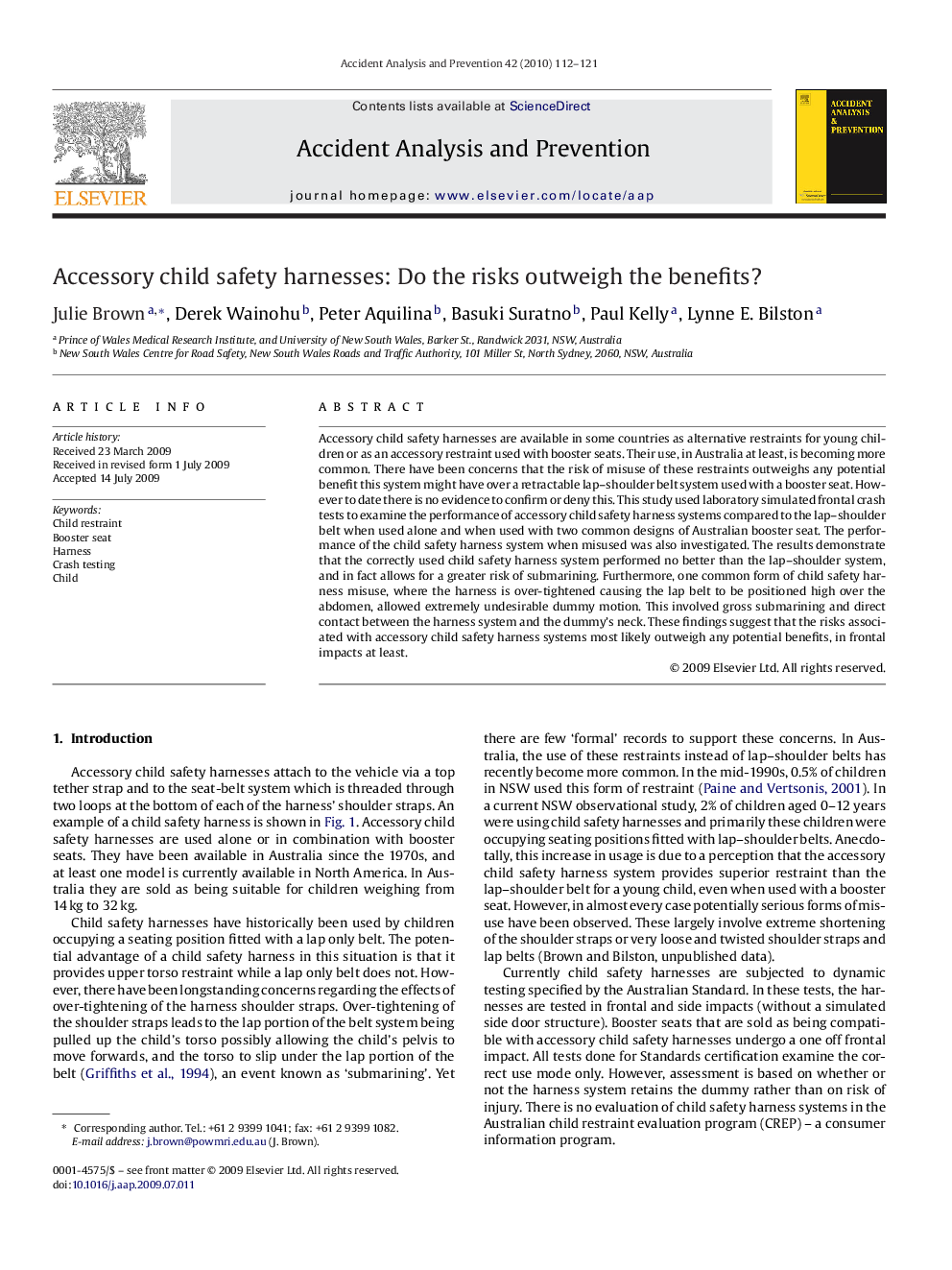| Article ID | Journal | Published Year | Pages | File Type |
|---|---|---|---|---|
| 573097 | Accident Analysis & Prevention | 2010 | 10 Pages |
Accessory child safety harnesses are available in some countries as alternative restraints for young children or as an accessory restraint used with booster seats. Their use, in Australia at least, is becoming more common. There have been concerns that the risk of misuse of these restraints outweighs any potential benefit this system might have over a retractable lap–shoulder belt system used with a booster seat. However to date there is no evidence to confirm or deny this. This study used laboratory simulated frontal crash tests to examine the performance of accessory child safety harness systems compared to the lap–shoulder belt when used alone and when used with two common designs of Australian booster seat. The performance of the child safety harness system when misused was also investigated. The results demonstrate that the correctly used child safety harness system performed no better than the lap–shoulder system, and in fact allows for a greater risk of submarining. Furthermore, one common form of child safety harness misuse, where the harness is over-tightened causing the lap belt to be positioned high over the abdomen, allowed extremely undesirable dummy motion. This involved gross submarining and direct contact between the harness system and the dummy's neck. These findings suggest that the risks associated with accessory child safety harness systems most likely outweigh any potential benefits, in frontal impacts at least.
